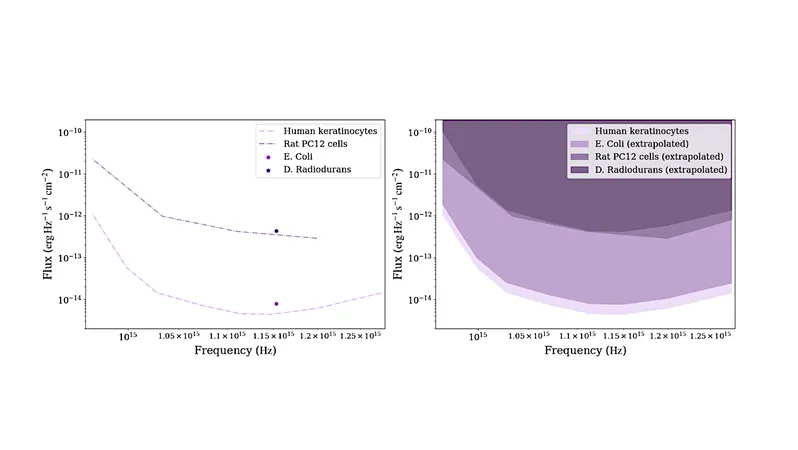
The Hidden Threat of Active Galactic Nuclei: Are Our Planetary Atmospheres at Risk?
2024-11-26
Author: Mei
In a groundbreaking study, researchers have delved into the effects of ultraviolet (UV) radiation emitted by active galactic nuclei (AGN) on planetary atmospheres, raising alarming questions about the potential consequences for life beyond Earth. Supermassive black holes, found at the centers of galaxies, often undergo intense periods of AGN activity, contributing to significant environmental challenges as they evolve over cosmic time.
The research investigates how varying levels of AGN radiation could endanger lifeforms with different atmospheric compositions. By analyzing data regarding the sensitivity of various organisms to UV radiation, the team identifies thresholds where radiation becomes hazardous. This critical assessment is vital for understanding the resilience of potential extraterrestrial life situated in areas influenced by AGN.
One key finding of the study reveals that planets boasting sufficient initial oxygen levels (with a surface mixing ratio of less than 0.001 mol/mol) can develop a more protective ozone layer in response to AGN UV radiation. This enhanced ozone layer acts as a shield, significantly reducing the amount of harmful UV radiation reaching the surface, compared to environments devoid of AGN influence.
Furthermore, the researchers estimated the proportion of solar systems in diverse galaxies that could experience the detrimental effects of AGN UV radiation. Surprisingly, they discovered that compact galaxies—particularly those known as "red nugget relics"—are the most impacted, showcasing a stark contrast when compared to more familiar present-day elliptical and spiral galaxies like M87 and our Milky Way.
The findings of this research lend credence to the Gaia hypothesis, suggesting that as life develops on a planet, the resultant oxygenation of the atmosphere creates a more stable environment, enhancing its resistance to extinction events. This could imply that habitable planets in the universe may be more adaptable and resilient than previously thought, potentially ushering in new avenues for astrobiology and the search for life elsewhere in the cosmos.
This study not only sheds light on the precarious balance between cosmic forces and planetary habitability but also poses crucial questions about the broader implications of AGN activity on the quest to understand life beyond our own planet. As humanity looks to the stars, research like this is essential for our understanding of the complex interplay between galaxies and the conditions necessary for life to flourish.


 Brasil (PT)
Brasil (PT)
 Canada (EN)
Canada (EN)
 Chile (ES)
Chile (ES)
 España (ES)
España (ES)
 France (FR)
France (FR)
 Hong Kong (EN)
Hong Kong (EN)
 Italia (IT)
Italia (IT)
 日本 (JA)
日本 (JA)
 Magyarország (HU)
Magyarország (HU)
 Norge (NO)
Norge (NO)
 Polska (PL)
Polska (PL)
 Schweiz (DE)
Schweiz (DE)
 Singapore (EN)
Singapore (EN)
 Sverige (SV)
Sverige (SV)
 Suomi (FI)
Suomi (FI)
 Türkiye (TR)
Türkiye (TR)